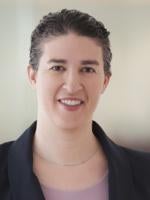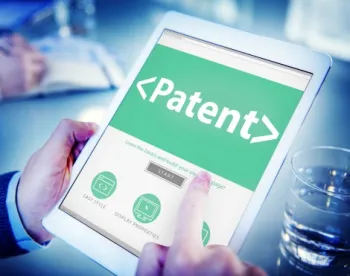In a patent infringement lawsuit, a plaintiff often seeks to recover lost profits damages—the profits that the patent owner would have made but for the competitor’s alleged infringement—instead of a lower reasonable royalty. A plaintiff is not automatically entitled to such damages, though, even upon a finding of infringement. Rather, the patent owner must prove its entitlement to lost profits damages. A recent decision from the District of Delaware is a salient reminder that this burden may be particularly hard to meet in cases where multiple related entities are collectively seeking lost profits damages. As explained below, parent/subsidiary plaintiffs should beware when one entity is the patent owner and the other entity sells the item on which the lost profits are based.
The case was brought by Intuitive Surgical, Inc. (“IS”) and its wholly owned subsidiary, Intuitive Surgical Operations, Inc. (“ISO”) (together, “Intuitive Surgical”). They alleged that Auris Health, Inc. (“Auris”) had infringed Intuitive Surgical patents directed to robotic surgical equipment by making and selling a competing robotic bronchoscopy device. ISO owns the patents-in-suit, and it manufactures and sells minimally invasive robotic-assisted surgical systems to its parent, IS, which is a non-exclusive distributor of ISO’s surgical systems and sells them to customers.
Intuitive Surgical contended that Auris’s robotic bronchoscopy devices infringed its patents and that Intuitive Surgical (i.e., IS and ISO) was entitled to the profits that it would have made on the sale of its minimally invasive robotic-assisted surgical systems but for Auris’s infringement. To support its theory for lost profits damages, Intuitive Surgical relied on the testimony of a damages expert who stated his understanding that ISO owns the patents-in-suit and sells the patented technology to IS, which then sells the surgical systems to customers, and “[t]he money then goes back to [ISO].”
Intuitive Surgical’s argument does not fit the standard framework to recover lost profits damages, where a patentee sells some item, the profits of which have been lost due to infringing sales. Here, the patent owner, subsidiary ISO, sells its surgical systems to its parent IS, who then sells to customers. IS (who is not the patent owner) is therefore the entity who lost sales to customers.
Some courts have allowed related-entity plaintiffs to collectively recover lost profits damages upon a showing that profits “inexorably flow” from one entity to the other. In this regard, the Federal Circuit has not foreclosed the possibility that the “inexorable flow” of profits from subsidiary to parent may support a lost profits theory for two entities collectively. Intuitive Surgical’s damages expert thus argued, albeit in the opposite direction, that “the lost profits [of IS]… inexorably flow to [ISO].”
Auris nonetheless moved for summary judgment that Intuitive Surgical had failed as a matter of law to prove that it was entitled to lost profits. Specifically, Auris argued that Intuitive Surgical provided no explanation for how the profits of the parent company, IS, flow to the subsidiary, ISO. The court granted Auris’s motion and found Intuitive Surgical was not entitled to lost profits damages.
In granting Auris’s motion, Judge Noreika cited long-standing Federal Circuit precedent that a patentee may not claim, as its own damages, the lost profits of a related company. In order to recover lost profits damages for patent infringement, the patent owner must show a reasonable probability that it would have received the additional profits but for the infringement. While Intuitive Surgical attempted to rely on an expert to show such a “reasonable probability,” the expert’s opinion was unsupported by the relevant facts. As Judge Noreika stated, “[t]hese conclusory statements … are insufficient to support a collective assertion of lost profits incurred by [IS and ISO].” Thus, Intuitive Surgical “has not shown how, under any theory or method, [the subsidiary ISO] would have made additional sales but for Auris’s alleged infringement. Intuitive [Surgical] has only provided a theory of [the parent IS’] lost profits and a conclusory statement that the profits of [IS] inexorably flow to its subsidiary [ISO].”
Based on this decision, parent/subsidiary plaintiffs in patent infringement lawsuits should take care in supporting an argument for lost profits damages and may want to consider the following:
-
Testimony of damages expert. If parent and subsidiary plaintiffs seek to argue for lost profits damages under a theory that profits “inexorably flow” between them, it is crucial that the plaintiffs offer sufficient evidence in support of its argument.
-
As the Delaware Court held, conclusory assertions that profits inexorably flow between parent and subsidiary are not sufficient as a matter of law.
-
Any facts on which the plaintiffs or their expert wish to rely must be disclosed during fact discovery. The failure to do so may be fatal to the plaintiff’s claim to lost profits: In granting the Motion for Summary Judgment, the Court noted that Intuitive Surgical’s damages expert’s reply report distinguished the lost profits of IS and ISO based on information not disclosed to Auris during discovery. While Auris’s motion for summary judgment was pending, Auris moved to strike the portion of the reply report that relied on the undisclosed information. The Court granted that motion, leaving Intuitive Surgical to rely on the lost profits theory set forth in its opening report, which Judge Noreika found to be conclusory.
-
-
Patent assignment. Because lost profits damages are the profits that the patent owner would have made but for the competitor’s infringement, thoughtful assignment of patent ownership between parent/subsidiary entities is important. Assigning patent rights to the entity that sells to consumers provides a direct theory of lost profits—avoiding altogether a reliance on a theory that profits “inexorably flow” between parent/subsidiary.
-
Business relationship. Parent/subsidiary entities may also want to consider the various business relationships between entities specific to a lost profits damages analysis. For example, a sale of inventory from one entity to the other may void the selling entity’s later ability to claim lost profits, despite the fact that the related entity who bought the inventory lost sales to the ultimate customer.
In sum, it is crucial for parent/subsidiary plaintiffs to timely disclose all evidence during discovery supporting lost profits damages. It is equally important for parent/subsidiary plaintiffs to evaluate the business relationship and patent ownership arrangement between parent and subsidiary under the framework for recovery of lost profits damages.





 />i
/>i


